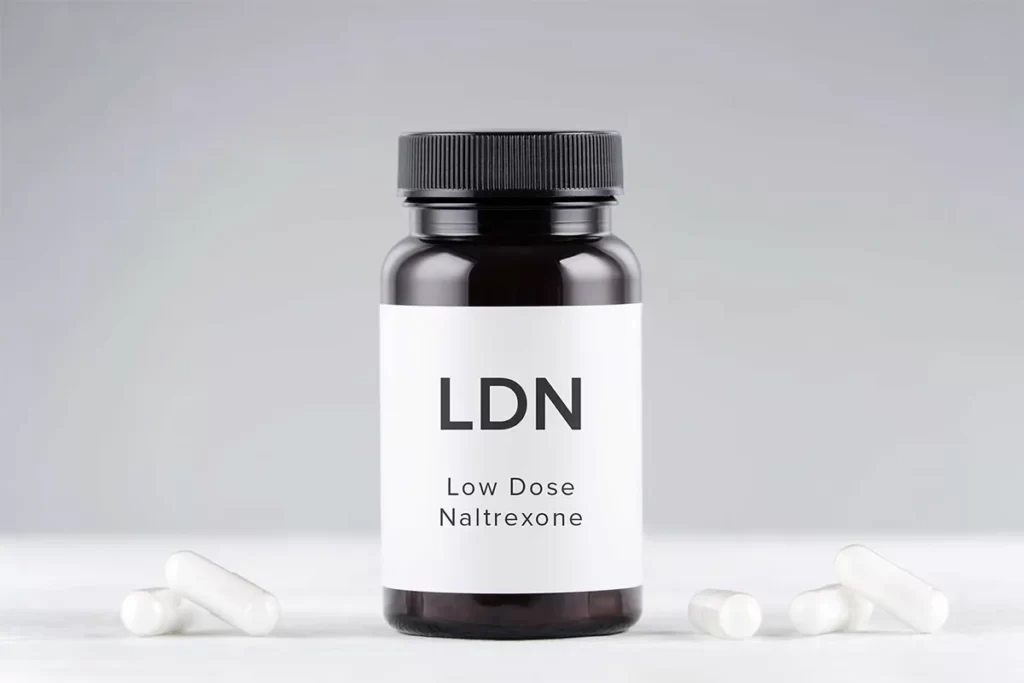Fasting for Weight Loss Over 50: A Safe & Effective Guide
-
 Written by
Michael J. Ormsbee
Written by
Michael J. Ormsbee
- LAST UPDATED September 19, 2023
Reaching age 50 sparks new considerations for maintaining wellness, from balancing hormones to preserving bone density. The approach to weight loss must evolve as well when your metabolism changes. Intermittent fasting has emerged as an effective weight loss strategy specifically for women over 50. By cycling between strategic fasting and feeding, research shows that intermittent fasting facilitates fat burning while protecting lean muscle mass – a key anti-aging goal.
In this comprehensive guide, we’ll dive into how intermittent fasting for weight loss over 50 works, outline ideal methods and timing for women over 50, provide a sample meal plan, and offer tips to maximize results. Let’s debunk the myths around fasting after 50 and explore how this eating pattern can optimize your health in midlife and beyond!
What is Intermittent Fasting and How Does It Work?
Intermittent fasting (IF) is a broad term for various meal timing approaches that alternate between periods of fasting and eating. While fasting techniques have long held a role in cultural and religious practices, only recently has science begun unlocking fasting’s inherent metabolic benefits. By incorporating strategic fasting into your routine, you can prompt quicker weight and body fat loss.
There are several types of intermittent fasting, each with a slightly different fasting-to-eating ratio. Here are some of the most popular IF methods:
- 24-hour fasts: Complete 24-hour fasts, usually 1-2 times per week
- Alternate day fasting: Fast every other day
- 16/8 method: Fast for 16 hours, eat during an 8-hour window
- 5:2 diet: Eat normally 5 days per week, fast 2 days per week
No matter what type of IF pattern you try, the mechanisms for weight loss remain similar. When you fast for prolonged periods, your body is forced to tap into fat stores for energy, initiating metabolic processes like ketosis that burn fat quickly. Your insulin levels decrease while the human growth hormone increases. Essentially your body enters prime fat-burning mode during the fasting state.
In addition, fasting inherently reduces your overall calories consumed by eliminating snacks and limiting your eating window. You experience appetite suppression when fasting due to hormonal shifts like decreased insulin and leptin and increased ghrelin. This means you tend to eat far less than usual when resuming your eating periods, aiding the calorie deficit essential for weight loss.
Now that you understand the impressive fat-burning powers unlocked during intermittent fasting, let’s explore why it’s an ideal strategy for women over 50 seeking weight loss and longevity.

Benefits of Intermittent Fasting for Weight Loss Over 50
There are myriad benefits to incorporating intermittent fasting for weight loss over 50. Due to hormonal changes during perimenopause and menopause, fasting provides these targeted advantages for women:
- Promotes fat burning: By giving your body prolonged breaks from digestion and requiring stored fat to be tapped for fuel, fasting creates the optimal metabolic environment to burn excess body fat. Studies show intermittent fasting triggers 2-3 times more weight loss compared to simple calorie restriction.
- Preserves muscle: The natural loss of estrogen after 50 accelerates sarcopenia or loss of muscle mass. Strategic fasting days followed by protein-focused refeed periods prevent muscular atrophy. This is critical for maintaining strength, mobility, and a revved metabolism.
- Regulates blood sugar: Fasting has proven to decrease insulin resistance and lower blood sugar by forcing your body to become more efficient at processing glucose. This helps prevent and control prediabetes and diabetes risk after 50.
- Reduces inflammation: Age-related chronic inflammation slows metabolism and contributes to many diseases. Studies indicate fasting can lower inflammatory markers like C-reactive protein and cytokines to reduce this systemic inflammation.
- Balances hormones: Shifts in leptin, insulin, cortisol, and estrogen that occur during fasting have shown a potential to alleviate hormonal imbalances during menopause, including symptoms like hot flashes and insomnia.
- Supports heart health: Fasting’s impact on blood pressure, cholesterol, and triglycerides improves several heart disease risk factors prevalent among women over 50. This boosts cardiovascular protection.
Clearly, intermittent fasting provides impressive benefits tailored to the unique health needs of women over 50 compared to conventional weight loss diets. But what’s the best way to implement fasting after 50? Let’s explore that next.
Choosing the Optimal Intermittent Fasting for Weight Loss Over 50 Method for Women
As women age, embracing life’s wisdom influences the decisions they make, including how they choose to care for their bodies. Women over 50 often prioritize practices that respect the body’s need for gentle, gradual changes to achieve and sustain long-term results. This wisdom is especially beneficial when considering intermittent fasting for weight loss over 50. The key is to select a method that facilitates the body’s transition to burning fat for fuel while avoiding extreme hunger or deprivation.
Research suggests several efficient intermittent fasting methods suitable for women over 50. These plans are geared towards assisting with weight loss and promote healthier living while integrated seamlessly into daily life.
12-Hour Fast: Starting with the least strenuous, a 12-Hour Fast, is an excellent way to ease into fasting for weight loss over 50. This method involves fasting for twelve hours from last evening’s meal until intending to break the fast the following morning. This strategy coincides with our natural circadian rhythms, providing a gentle entry into the world of fasting.
16:8 Method: Taking a step further, the 16:8 Method extends your fasting period to 16 hours, leaving an 8-hour feeding window. Within this window, you can plan your meals, ideally between 10 am to 6 pm, while fasting for the remaining time. It offers the perfect balance, particularly for women gazing out with fasting for weight loss over 50.
Modified Alternate Day Fasting: For those seeking a slightly more aggressive approach yet wanting to moderate its intensity, Modified Alternate Day Fasting could be the answer. Instead of alternating total fasting days with feasting days, modify your intake to about 25% of your normal calories one day and revert to your regular eating habits the next. This method significantly reduces potential side effects and aids in maintaining consistency.
5:2 Diet: Finally, consider the 5:2 Diet. This method involves consuming only 500-600 calories on two non-consecutive days each week and eating normally for the other five days. It is critical to space out the fasting days at least three days apart to maintain hormonal balance, critical for women over 50 engaging in fasting for weight loss.
Although stricter protocols like 24-hour or 5+ day water fasts might seem tempting, they should never be undertaken without professional medical supervision. The body requires a gentle and gradual approach to transition into using fat as its primary energy source. Diving straight into more severe protocols could result in intense hunger, exhaustion, dizziness, and potential health risks.
As the sayings imply, Rome wasn’t built in a day, and the journey is as important as the destination. Patience, persistence, and consistency form the bedrock of a successful weight loss strategy, especially in the realm of intermittent fasting for women over 50.
Now that you have an overview of the most practical intermittent fasting protocols for women seeking weight loss over 50, let’s dive into an example of how a typical meal plan might look within these models.

Optimal Intermittent Fasting for Weight Loss Over 50: A Comprehensive Meal Plan for Women
Fasting for weight loss over 50 can be a realistic and healthy way to shed some extra pounds, especially by implementing intermittent fasting. The 16:8 protocol is a popular method that can fit seamlessly into a woman’s lifestyle. Here is an example meal plan that helps visualize how intermittent fasting can be incorporated into your daily routine.
Fasting Period: You would fast for 16 consecutive hours, starting from 8 pm yesterday until 12 pm today. During your fasting stage, only water, black coffee, or plain tea are allowed.
Feeding Period:
12 pm Lunch: Protein-packed tuna salad stuffed in red bell pepper, alongside a side salad with balsamic vinaigrette, which suits fasting for weight loss over 50.
3 pm Snack: A nutrition shake made of almond milk, 1/4 cup mixed berries, and 1/4 cup unsalted almonds – a perfect bridge between meals.
6 pm Dinner: A healthy portion of 4-6 oz salmon, roasted broccoli, and sweet potato to finish the day feeling satiated and nourished.
8 pm (Start your next 16-hour fast)
This schedule gives you a chance to fast intermittently for 16 hours, including your night’s sleep, and then consume 2–3 nutritious meals within an 8-hour window. The extended overnight fast kickstarts your metabolism and relies on fat as the primary fuel source. With meals separated by 4–5 hours, insulin levels have time to drop, maximizing fat burning between meals.
When building your specific meal plan tailored to fasting for weight loss over 50, keep the following tips in mind:
- Protein is essential, especially during your eating window. Aim for high-quality protein sources, such as fish, poultry, tofu, or Greek yogurt.
- Incorporate a variety of vegetables and healthy fats into your diet to feel satiated and maintain proper nutrient levels.
- Stay hydrated by drinking water throughout the day, and consider adding electrolytes if headaches or dizziness occur while fasting.
- Limit your intake of refined carbohydrates, sugar, and desserts during your feeding periods.
- Interpreting your body’s signals is crucial. If you’re consistently hungry, consider increasing meal frequency or caloric intake.
Remember, fasting for weight loss over 50 doesn’t mean starving. Rather, it demands a well-designed meal plan and a proper fasting-to-eating ratio, fostering long-term health and success. By incorporating this tailored meal plan, women over 50 can find an enjoyable and sustainable way to achieve their weight loss goals.

10 Tips to Optimize Intermittent Fasting for Weight Loss Over 50
Integrating intermittent fasting into your lifestyle can jumpstart a journey toward optimal fitness, especially when it comes to the strategy of fasting for weight loss over 50. Here are ten potent tips to help women over 50 implement this dietary approach effectively:
- Gradual Transition: Start with 12-13 hour fasts and gradually increase to extended periods. An abrupt transition to a stringent fasting routine can cause more harm than good.
- Stay Occupied: Keeping yourself engaged during fasting hours helps distract the mind from thinking about food. Boredom might incite overeating once your feeding window opens in the fasting for weight loss over 50 plan.
- Optimal Hydration: Water and electrolytes are pivotal for maintaining body functions during fasting. Supplement with minerals if susceptible to headaches, weakness, or muscle cramps.
- Attune to Your Body Signals: Take note of any symptoms indicative of low blood sugar, like anxiety or irritability. If you feel unwell, it is advisable to halt fasting and fuel your body for a while before you continue with your lose weight fast over 50 programs.
- Choose the Right Time: Schedule your fasting periods to end during the morning or afternoon. This way, you can eat normally for convivial dinner parties without a glitch in your fasting for weight loss over 50 plan.
- Gentle Fasting Breaks: Breaking your fast with light foods like broth or yogurt helps your body ease back into the eating phase. Overindulgence or consumption of heavy foods post-fast can take a toll on your digestive system.
- Sufficient Sleep: Lack of sleep can exacerbate food cravings and disrupt hormonal balance during fasting. Ensuring a healthy 7-9 hours of sleep nightly is paramount for the success of fasting for weight loss over 50.
- Balanced Diet: Focus on consuming a balanced, high-quality diet during the eating window. Including plenty of fresh fruits, vegetables, lean proteins, and whole grains can enhance your overall health and improve weight loss results.
- Regular Exercise: Coupling intermittent fasting with moderate exercise such as walking, swimming, or yoga can enhance fat burning, leading to more significant weight loss results over 50.
- Be Consistent: Steady commitment to fasting for weight loss over 50 plan and patience with weight loss results is key. Remember, substantial weight loss doesn’t happen overnight but is a gradual process.
Adhering to these strategies while lose weight quickly after 50 can help women ace their fitness pursuits and achieve their weight loss goals most efficiently while ensuring their overall health remains robust. Remember, each body is unique and requires a unique approach. Hence, always listen to your body’s signals and adapt as necessary. With determination and the right guidance, intermittent fasting can open doors to a healthier you.
Important Considerations for Intermittent Fasting Over 50
Intermittent fasting is not advisable for every woman over 50. Here are some precautions to consider before getting started:
Consult your doctor first if you have any medical conditions like diabetes or take prescription medications.
If you have a history of disordered eating, proceed with caution to avoid triggering unhealthy habits.
Monitor for symptoms of low blood sugar like dizziness and irritability and stop fasting if they occur.
Stay alert to signs you are significantly undereating during fasting periods or overeating when meals resume.
Note impacts on sleep, mood, and energy levels. Adjust your fasting routine if you feel unwell.
Consider taking a multivitamin to compensate for any nutritional deficiencies from restricting intake.
Additionally, women prone to sarcopenia – the age-related loss of muscle mass – should take extra precautions to preserve muscle while fasting through sufficient protein intake and resistance training. Talk to your doctor if concerned about muscle loss or frailty with aging.
While research confirms intermittent fasting’s outstanding benefits for weight loss and metabolic health, it must be implemented mindfully and gradually for sustained wellness. Now let’s wrap up with some frequently asked questions.

FAQs about Fasting for Weight Loss Over 50
How much weight can I expect to lose?
Results vary based on the individual and starting weight. However, studies show intermittent fasting can produce 7-15 pounds of weight loss over 6-24 weeks for overweight adults. Mild calorie restriction on eating days boosts weight loss further.
Will fasting cause muscle wasting after 50?
Strategically pairing fasting days with days focused on protein consumption will help maintain muscle. Incorporate strength training to keep muscles challenged. Monitor strength and fitness – if declining, increase protein and calories.
Can I exercise while fasting?
Light walking, gentle yoga, or leisurely biking for under an hour is fine. But intensive cardio or strength training requires proper fuel beforehand. Hydrate very well and stop exercising immediately if feeling faint.
What if I can’t sleep when fasting?
Difficulty sleeping can happen as your body adjusts to new hunger signals. To promote sleep, avoid caffeine after noon, stay cool at night, and try sleep supplements like melatonin. Over time, sleep quality improves as fasting becomes habitual.
In summary, research confirms that intermittent fasting facilitates weight loss and provides anti-aging benefits for women over 50. Implemented mindfully, fasting can optimize hormonal balance and metabolism during this transitional life stage. As with any dietary change, work with your doctor and tune into your body’s cues to guide your intermittent fasting journey.






